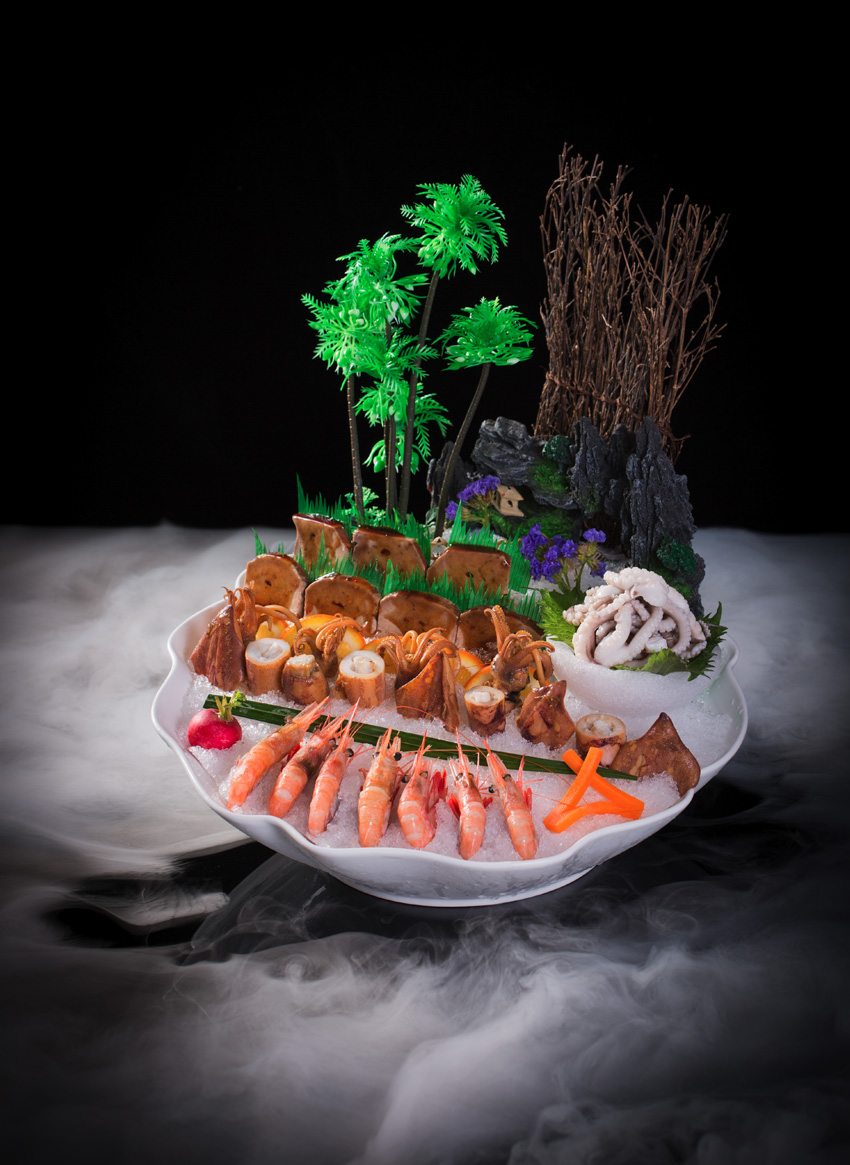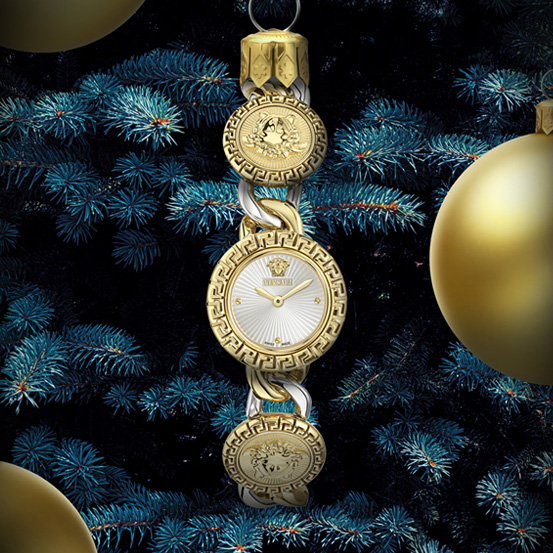The Kitsch Issue
Tastes are not debatable? Now that would be nice! We don't argue arguments tainted by the prevailing narrative of geopolitics and its wars. We don't test the gospels of different religions. But that's what's needed: to stop debating tastes! Taste? Taste is what we have left. Even if it's kitsch. Or tacky.
Taste. That's all this is about. Extending the taste buds and their sensitivity to other universes, because it's also sensitivity that we're dealing with here, we have that everyone's taste is what we know. Either it's bad or it's good and no, we're sorry, but there's no middle ground or half-measures. No scale measures the ability to feel and this makes sense abstract. It varies from individual to individual, from the culture to which they belong, from their social stratum, and, above all, from their education and experience of what the taste will apply to. If we're talking about cuisine, ask a young chef, one of the new prodigies in the field, working his way up in his city's top restaurants, if he's ever managed, from his perspective (in other words, in terms of his taste), to match that dish his mother used to make him on Sundays or the sweets his grandmother used to give him when she visited. But then ask an inhabitant of a remote village in Portugal, of meager means, accustomed to the frugality that his condition obliges but also, and indisputably, to a quality of products that ordinary mortals in the city don't have access to (such as a daily soup made from very tasty legumes, sausages, and homemade cheeses, bread like no hypermarket or bakery in the suburbs can produce and, of course, animal protein sparingly), what they thought of the shrimp cascade that appeared, after enough Whistle the Train and Father of the Child dances, between broken glasses with knives asking for the bride and groom's kiss and garter auctions, at a nephew's wedding buffet. I reveal: it's something for a few generations. The fascination with kitsch, my friends, is real. And it's so strong that it led the Germans of the 19th century to create the word that designates it because it was a gap that needed to be filled. It's a noun in the Germanic language meaning "garbage or debris, a sloppy, pretentious, sentimental or tasteless work of art". It is a derivative of the verb kitschen, "to sweep or scrape the mud off the street", or from the German dialect kitschen, "to sell cheaply." It entered the English lexicon shortly afterward and made the 20th century its beachhead. Cross-referencing the definitions in the Cambridge and Oxford dictionaries, kitsch is defined as "art, decorative objects or design that are popular but considered to have no real artistic value because they are demonstrably in poor taste." In fact, I'm writing this to you while squinting at the painting on my wall. It's the famous Boy with a Tear, to which I've added a clown nose and a pair of googly eyes.
I remember the time when villas shone in the slanting light of the west. It was the tiles that covered them. Some in their entirety, others only halfway up. Once over the wall, there was a sort of corridor lined with Egyptian Star trees, between an orange tree and a lemon tree, which led to the entrance door, located on a first-floor porch and next to which was a plaque with the inscription Vivenda O Nosso Ninho, which could be changed to Vivenda O Nosso Sonho, It is certain, however, that there would be ceramic swallows, that creation by Bordallo Pinheiro that was so successful as a decorative resource that counterfeits abounded in the itinerant markets, and there were potters who made a living from it, from Caldas mugs and lucky little black things. Inside these villas, you can be sure that there were leather sofas with napery backs, an ITT Ideal Color television set with a napery topped by a bowl of Doctor Bayard sweets, dining table with a naperom topped by a tureen in the shape of a Savoy cabbage (another Bordallo creation) and, in the kitchen, a fridge with a naperom topped by a Dalmatian in crockery and a marble counter where an orange yogurt maker topped, amazingly, another naperom. So much naperom? Yes, and all made using instruments that were kept in a metal box that we opened so many times in the hope of having, as the packaging attested, butter cookies. But we were in the kitchen. From that temple of the expert baking of our mothers, aunts, and neighbors, came things that we never tasted again, because they inherited an appearance (and flavors) that, today, are considered kitsch (if not everything described so far). Cookie cakes - Maria soaked in bag coffee if you wanted that flower shape, toasted if you wanted the rectangular shape. Chicken noodles just like the ones from the school canteen, only still warm. Tinned sausages with a fried egg. Chicken, veal, or lamb, sometimes with peas, sometimes with green beans. Breaded spaghetti with ketchup (it's an assault if you describe it to an Italian, who either eats cotoletta alla Milanese or spaghetti, the two together make him irascible). Rice pudding with patterns, checkered or not, made with cinnamon. Knorr canjinha with letter noodles. Pork loin with Arabic rice, a trend that was left over from weddings in the 80s, before the trend for dates with bacon. Steaks au champignon. And, of course, the codfish whose recipes we can thank Chef Silva for, present in magazines that were religiously kept, sometimes in clippings, in the cupboard of the thousand Tupperwares that were acquired, out of pity, at meetings of the same name, held... in neighbor Elvira's living room. Sometimes, a few times, we left the house to go out to dinner, for tournedos, for fondue, for hammered crab, wearing a plastic bib with the establishment's logo on it. All this, I suppose, results in some nostalgia. Without going into that exaggeration that dictates so many of our mistakes, even when it comes to voting, the full-blown "back in the day it was good" vacuity, the hard truth is that we let things die, often out of vanity and other vacuities, that didn't have to be just pieces of memory. Let it be said by those who would nowadays pelt themselves for a Chinese dinner with everything that characterized it, from the Crepe to the Chop Soy, from the Spicy Acid Soup to the Beef with Oyster Sauce, and, arriving at the very same establishment where they once enjoyed a dessert of Fried Ice Cream with Rum, they find a slick sushi buffet.
Just when we seem to have reached the point we've been striving for so many decades, a whole world scandalized by plastic islands the size of the Amadora metropolitan area drifting in the ocean, heading for the recycling with our Tetra Paks and hypermarket bread bags, which are paper but have a plastic strip just to confuse us and allow the checkout lady to make sure we're not fooling her (it is two loaves of seed bread, plus two from grandma with mother dough), a car made of plastic and powered by batteries that are impossible to recycle is launched which, in 20 years, will be buried in a landfill the size of Mongolia or anywhere else that has already been exploited for their lithium. I think of this as I remember getting together with friends to smoke a few chocolate cigarettes on the park bench, and then throwing the packet, duly crushed, on the ground, as our parents used to do. This goes to show that "the world bounces and rolls like a colored ball between the hands of a child", as the late Gedeão would say, but some things never change. "Kitsch: cheap and tasteless futility, adorned with artistic attributes; ridiculous conceit with dilettante buzzwords that correspond to the culture of a grocer; something that means nothing and demands nothing from thought; The rich man who wears gold made of brass and glitter made of glass around his artistic belly; the bluff who wants to bluff his heart and makes it shed tears like an onion; in short, the bargain hunter who speculates with childlike joy on what glitters. And this speculation has always made good catches, has always outwitted the army of the gullible and the indifferent, both at the time of the flood and today," as Fritz Karpfen, the German art historian who would inspire the Bauhaus movement, wrote in 1925. Author of the only essay on the subject, Karpfen knew what some would deny: kitsch always accompanies all artistic avant-gardes, like a vulture on the prowl. The choice is simple and can only lie between the arrogance inherent in the learned connoisseur and the act of accepting, open-mouthed, all the subjective beauty of kitsch. Did you notice, on your last trip to Thailand, the smile on the face of the clerk in the souvenir store when you bought the little polychrome postcard with a smiling Buddha that you now display in your foyer? Or when you went to Japan and bought the kitten that now waves its arm in your kitchen? Because in the back there was a print of The Great Wave of Kanagawa, by the master Hokusai.
For God's sake, we've only just come out of a season when there was a table where everything was kitsch! There were endless queues at pastry shops where ducheses and croissants called out to us, but we opted for bolo-rei, azevias, a Christmas tree decorated with little plastic birds and a kind of yellow, shiny snake that could have been a fourth-grader's science project but turned out to be called egg lamprey. And if it weren't for the orders of the European Union and its obedient Rex Alimentar (ASAE), we'd still be smashing devitalized teeth today with a broad bean and a toast wrapped in paper, invariably an Our Lady of Fátima who lacked only luminescence, a condition which, if it existed, would dictate her presence on our bedside table, right next to the orange or purple Saint Antoninus you can buy in any recuerdos store in downtown Lisbon. And if you think that Portugal is unique, think of the cupcakes and macarons from Maison Ladurée, packed in boxes that, at first glance, seem to contain a Patek Philippe watch. Kitsch is not making a comeback. It's always been there and it's always been an option that has stirred our core and our attraction to the "cute", the "funny". The food industry is no exception. There's a global revival that, in the end, could just be called an acceptance of the obvious. Charlottes, tartelettes covered in cherries whose brilliance is softened by powdered sugar, glittering bavaroises, pavlovas, and all the exaggeration of a Black Forest all remind us of the splendor of a table at the Palace of Versailles at the feasts of Marie Antoinette who, after all, and as the last meal before her beheading, ordered chicken soup with pasta. Everything that is jelly is pornographically Instagrammable, plated on the finest porcelain with motifs that would have been impossible a decade ago. In this respect, it's unthinkable that the A Vida Portuguesa store in Rua Anchieta should close its doors (sorry, but this had to be mentioned), where there was everything to satisfy our nostalgia and shine at a dinner party at home. But if there are still people here who won't give up on a suckling pig with sunglasses while biting into an apple, you'll be surprised to learn that, all over the world, meatballs with excessive molhanga, an American invention, continue to put the parsimony of a Neapolitan ragu to shame. On social media, the subcontinent's street food has ceased to be a joke about poor hygiene, now appealing to the senses with its vibrant colors, from Thailand we can almost smell those glistening rinds and, of course, In the USA, we get pulled pork sandwiches that are squeezed so that all those sauces shine at the mercy of purposely low lighting, as well as toasties where so much melted cheese seems impossible to contain inside with each bite. This contradicts the golden age of food kitsch, which may have been born with Mrs. Betty Crocker, author of almost all the American cookbooks of the 1950s and promoter of a "trend" that, in Portugal, would last until the 1980s: recipe booklets, sometimes nailed with pins to the corticite board of the reminders, sometimes tucked into recipe books and notebooks. Forget pastel colors. The design of this pioneering was based on a bright palette that was as discordant as possible, hot pink against a petrol blue background, intense sparkles and, if they were photos, the vibrance of Photoshop would break records. But they were drawings. It was the Eldorado of agency creatives working at desktops, not on iMacs that no longer have napaperons but all the Magic Fireflies released to date. And how kitsch do you think that is? Don't worry, it's for a good cause. It's for a good cause.
Translated from the original in The Kitsch Issue, published February 2024. Full stories and credits in the print version.
Most popular


O que lhe reservam os astros para a semana de 2 de dezembro a 8 de dezembro
02 Dec 2025

Relacionados



Com propostas em 100% caxemira, a Intimissimi apresenta a sua nova coleção cápsula
03 Dec 2025



